Amazon: the name conjures images of vast swathes of isolated jungle, indigenous communities and their unique cultures, and of course the mighty river itself. This is the classic image of the Amazon basin, but the reality can be quite different.
Cities like Iquitos (Peru) and Manaus (Brazil) are quite large and cosmopolitan – Manaus has over 2 million residents! As a result it can take quite some effort to get away from all the hustle and bustle of these bigger settlements and experience the “real” Amazon. So, if you want more nature than civilization then you’ll want to venture a bit further off the beaten path. That’s what I was looking for, and I found just that in the Colombian region of Amazonas, particularly in the idyllic eco-village of Puerto Nariño.
And one big added bonus? Unlike some other places in the Amazon basin, this area is a fantastic budget-friendly destination! So if you’re interested in visiting someplace unique (exotic, even?) without destroying your bank account balance, the Colombian Amazonas, and Colombia in general actually, is where it’s at!
This page may contain affiliate links; if you make a purchase through them, I may receive a small commission at no cost to you.
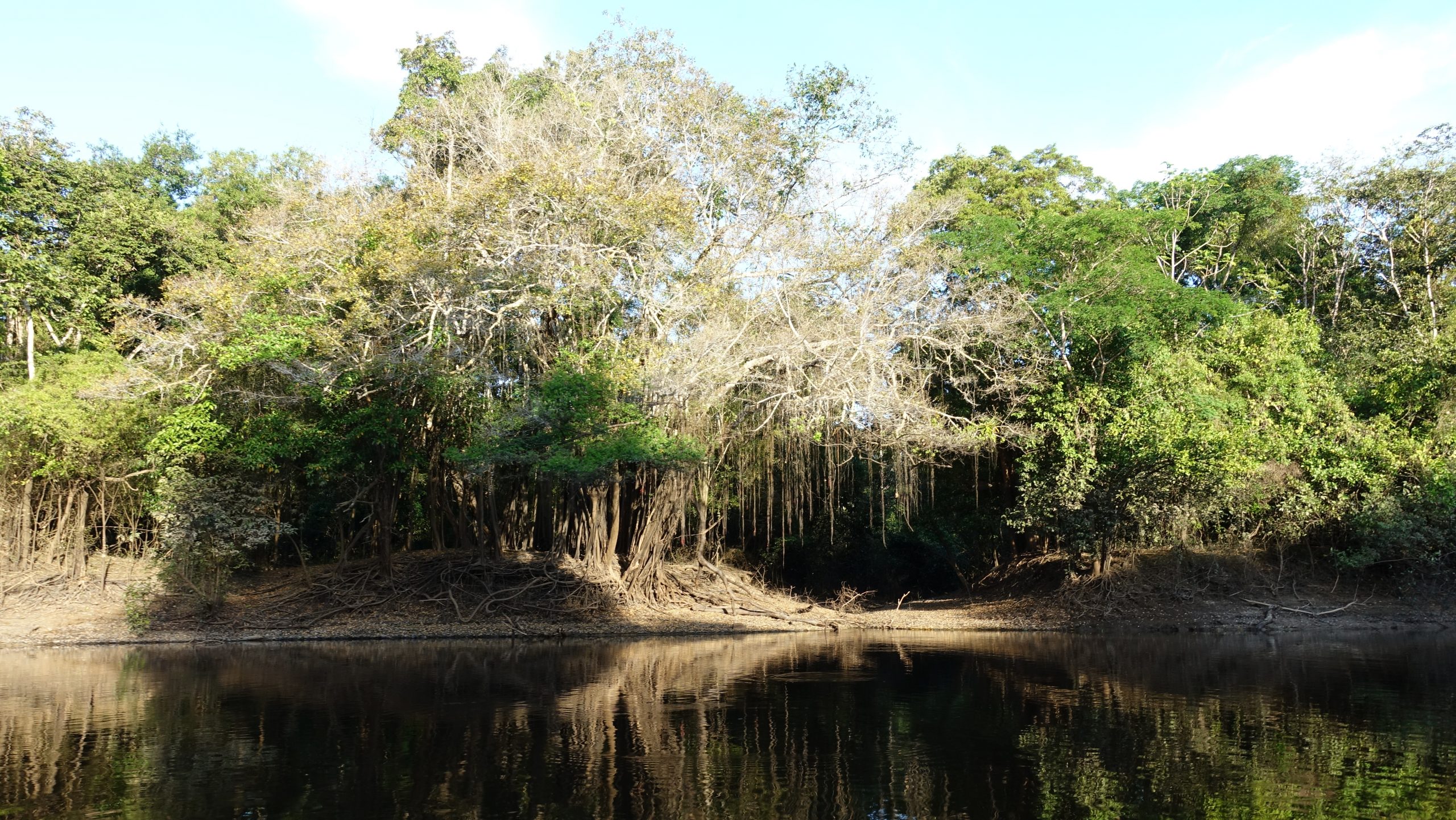
What makes the Colombian Amazonas so special?
First of all, it’s quite isolated; the region’s capital, Leticia, is reachable only by plane or boat, and the airport is served by only a few flights per day from Bogotá. Secondly, while the economy is partly reliant on the money brought in by visitors it is still refreshingly free of mass tourism, adding to its authenticity. And finally, despite its isolation it’s a very affordable destination, especially when compared to other areas of the Amazon basin.
What it may lack in polished tourism infrastructure, the Colombian Amazonas more than makes up for with its natural environment and the friendly, welcoming nature of the local people. The area is populated by many indigenous communities, offering a chance to get an authentic taste of indigenous Amazonian culture…more on that later!
I visited the area with my husband and teenage stepsons in 2018 while on a 2-month trip to South America, and we all agreed unanimously that our time spent there was one of the highlights of our whole trip!
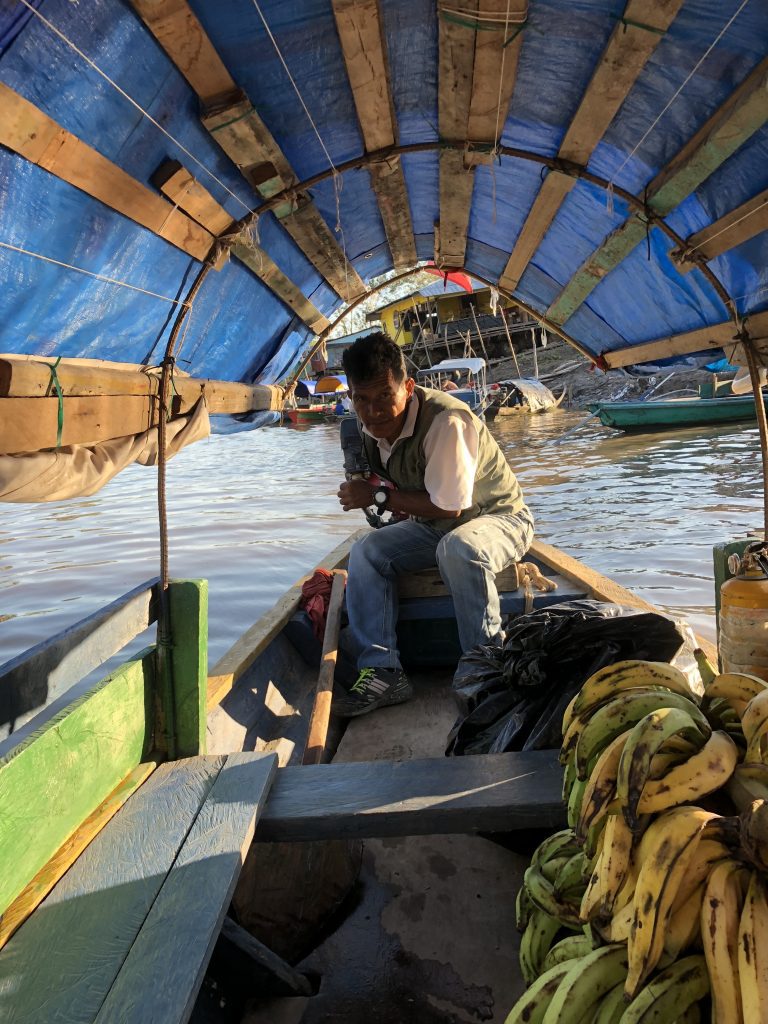
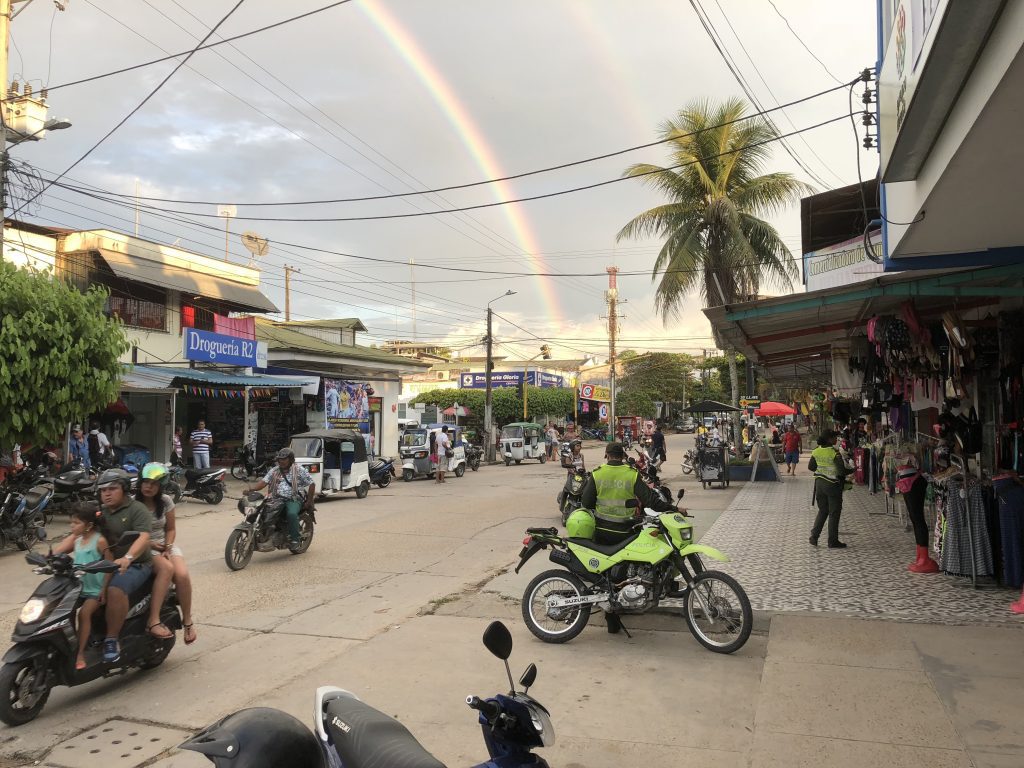
Leticia
As mentioned, Leticia is the capital of the region. It lies directly on the Amazon River and borders both Brazil and Peru (you can literally walk to Brazil, and if you cross the river you’re in Peru). You’ll inevitably pass through and it can be interesting for an overnight, but to be honest we didn’t care much for Leticia. It’s very much a working city focused on trade and to some degree tourism, but it can be loud and smelly due to the exhaust from vehicles and the thousands of motorbikes that locals use to get around.
The reason we stayed there a full day, and this was most definitely worthwhile, was to visit Mundo Amazónico, an ecological park a few minutes’ drive from town. It gave us a great introduction to the region and helped us get acquainted with the environment and local indigenous culture.
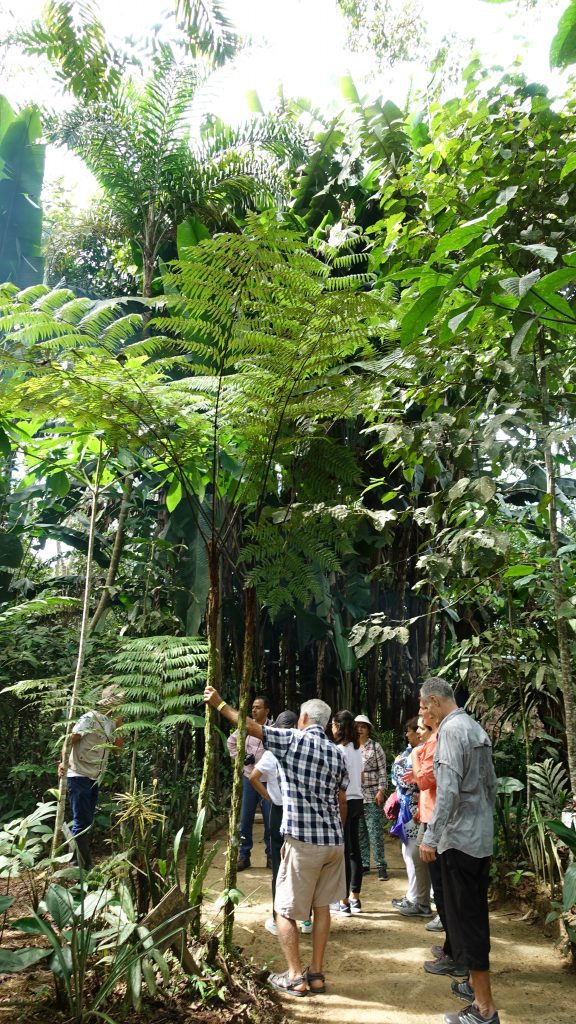
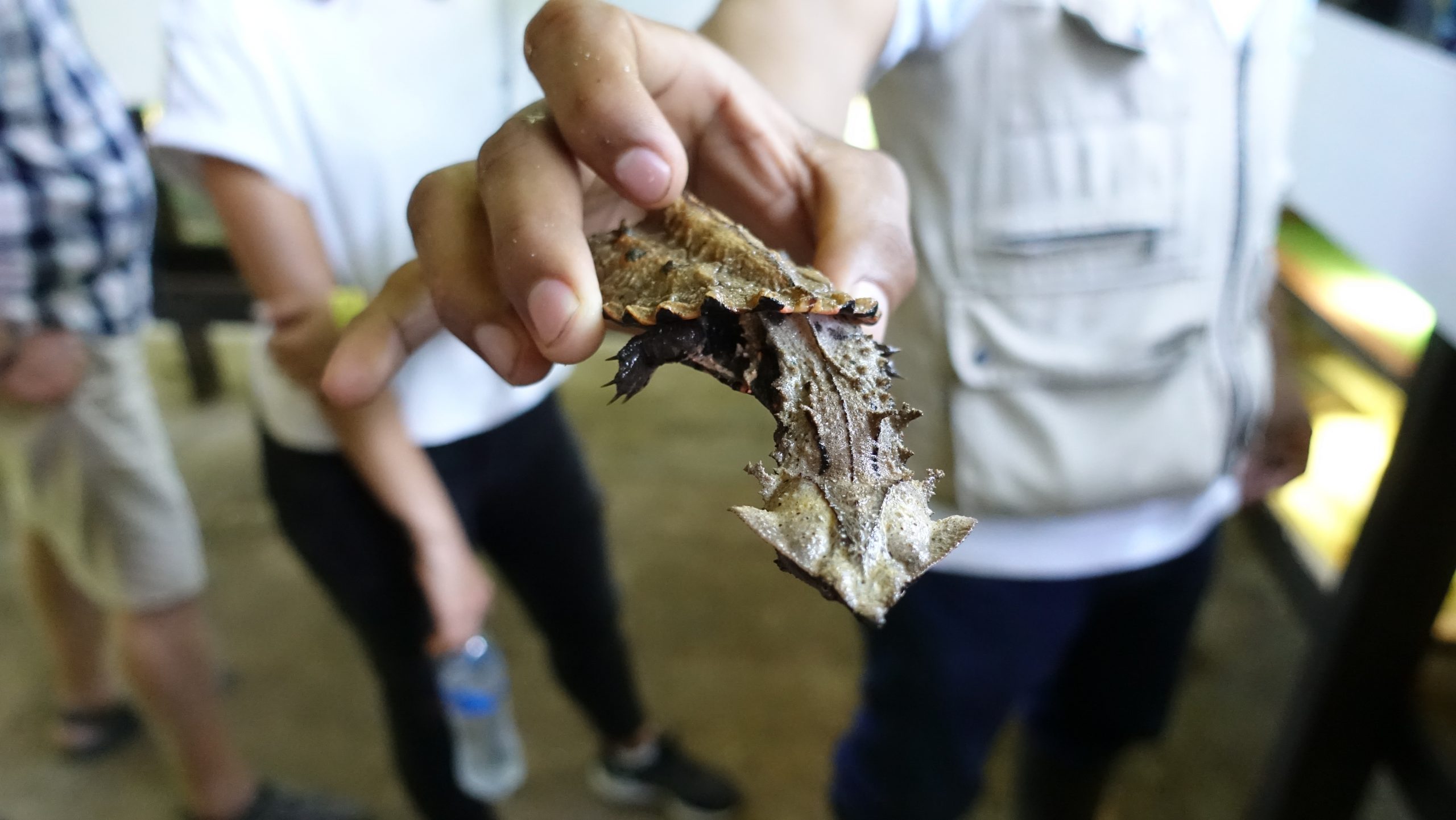
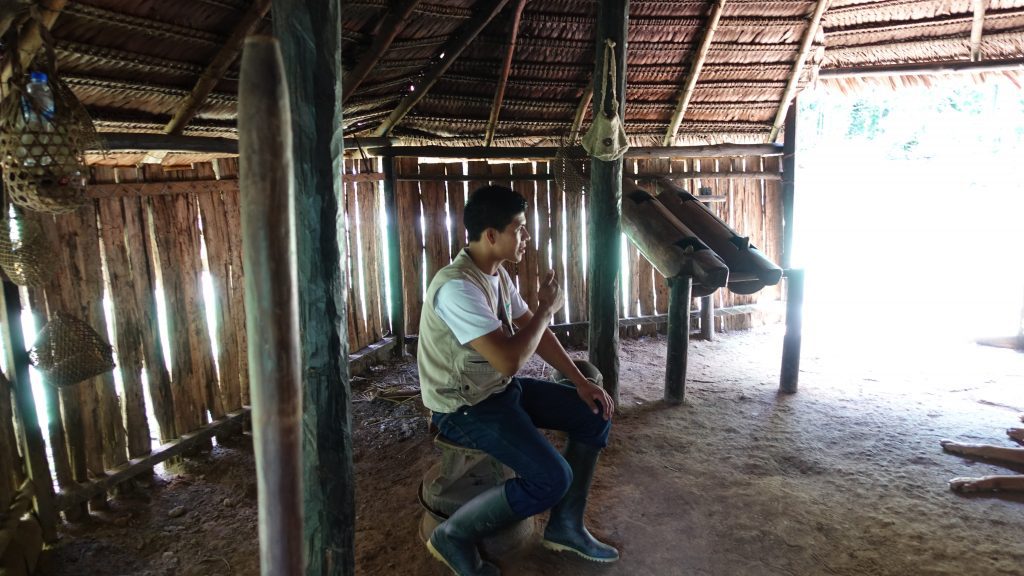
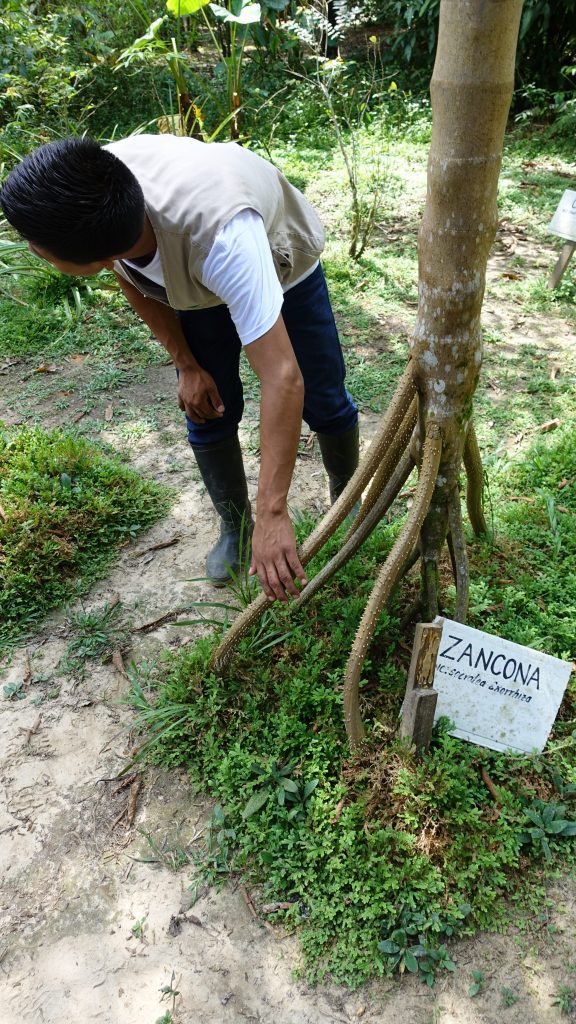
The staff at Mundo Amazónico also served us an amazing lunch of pirarucu fish (you’ll see them later) wrapped in banana leaves, cooked over an open fire. It was oh-so-simple but tasted incredible!!
Oh, and our stay in Leticia also gave one of us (sorry, but it wasn’t me – maybe next time!) the chance to try the local specialty of mojojoy – I’ll let you guess what they are from the photo (right). Well, okay, just a little hint: 🐛 At least they cooked them first!
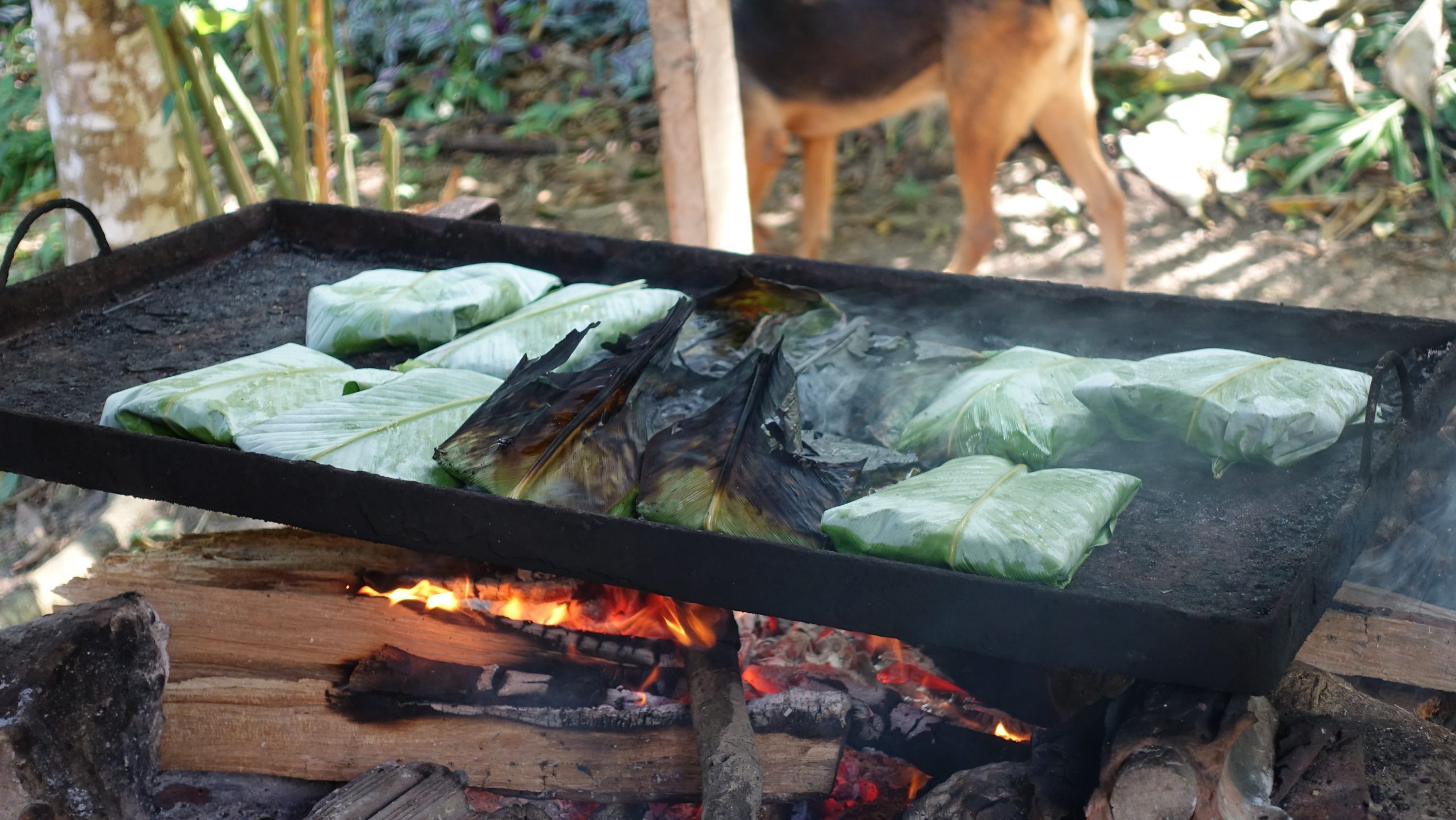
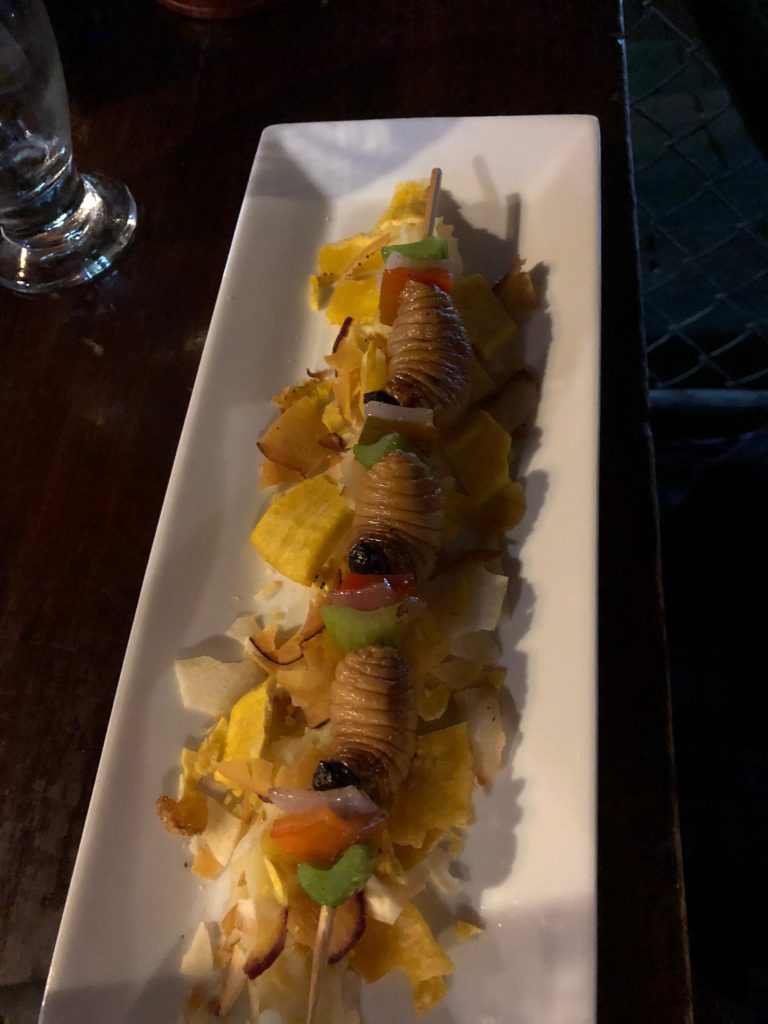
My recommendation is to spend your first day in Leticia, visiting Mundo Amazónico and checking out the city, and then move upriver to continue your visit.
What’s upriver, you ask? None other than the beautiful village of Puerto Nariño and its surroundings, including Lago Tarapoto, the Mocagua indigenous community and the Fundación Maikuchiga! 🐒
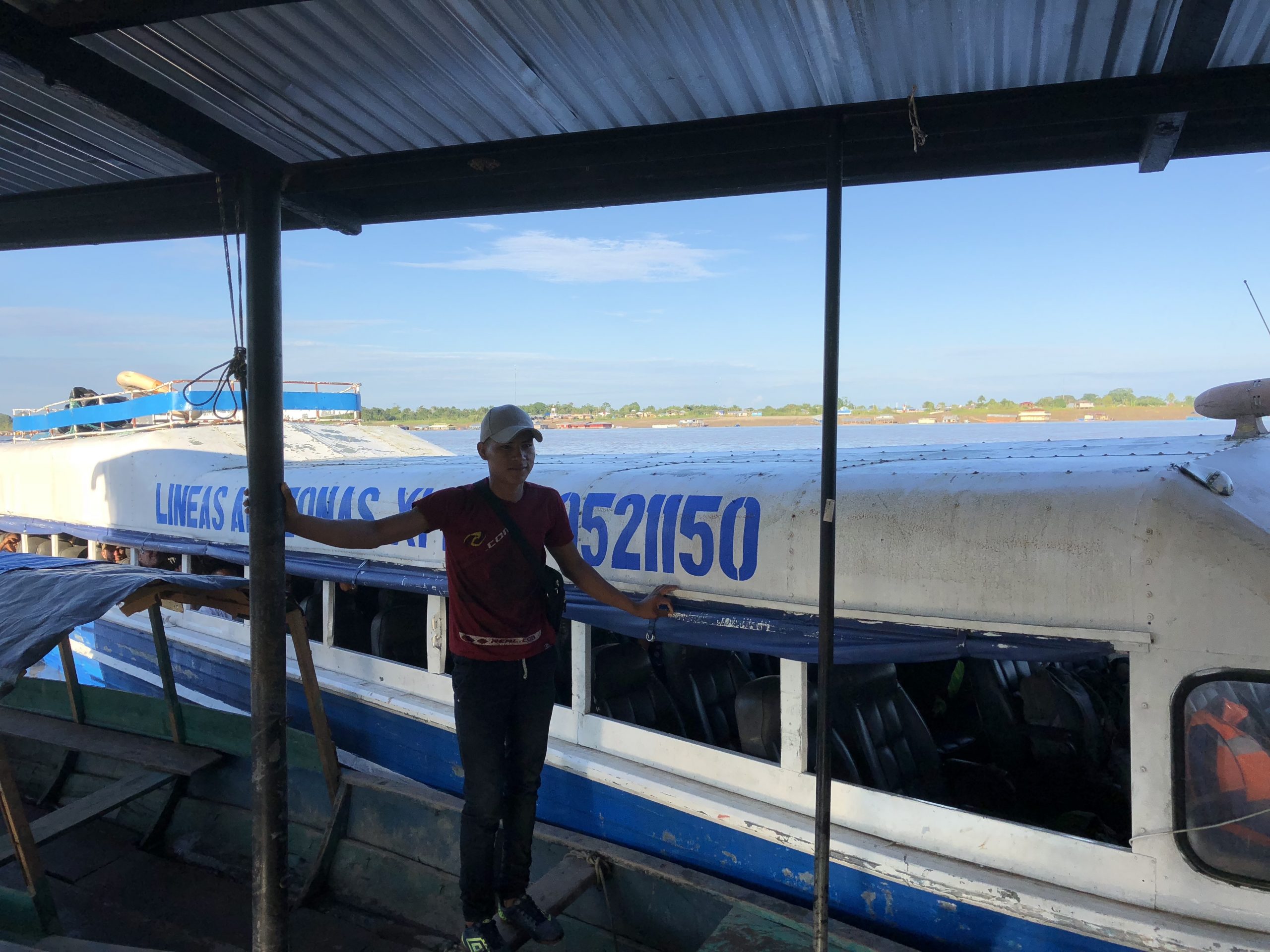
Puerto Nariño
The highlight of our visit to the Colombian Amazonas was our 3-night stay in this adorable little eco-village. Puerto Nariño is entirely free of motorized vehicles, except an ambulance and a small truck to pick up garbage and recycling. It’s incredibly clean, safe and friendly, and most of its inhabitants are members of local indigenous communities (primarily Ticuna). The majority of businesses are run by locals, helping to ensure that money spent there directly benefits the community. That’s an ‘A’ for sustainability!
Be sure to climb the Mirador tower in town (it’s hard to miss!) for great views over the village and the Amazon itself, and afterwards try the homemade ice cream at its base…the maracuya flavor was one of our favorites!
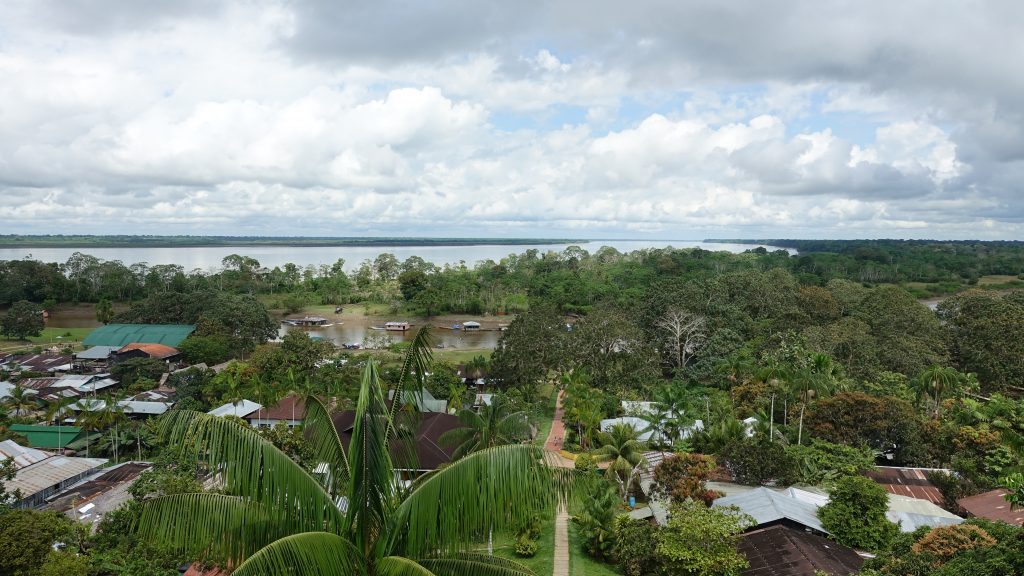
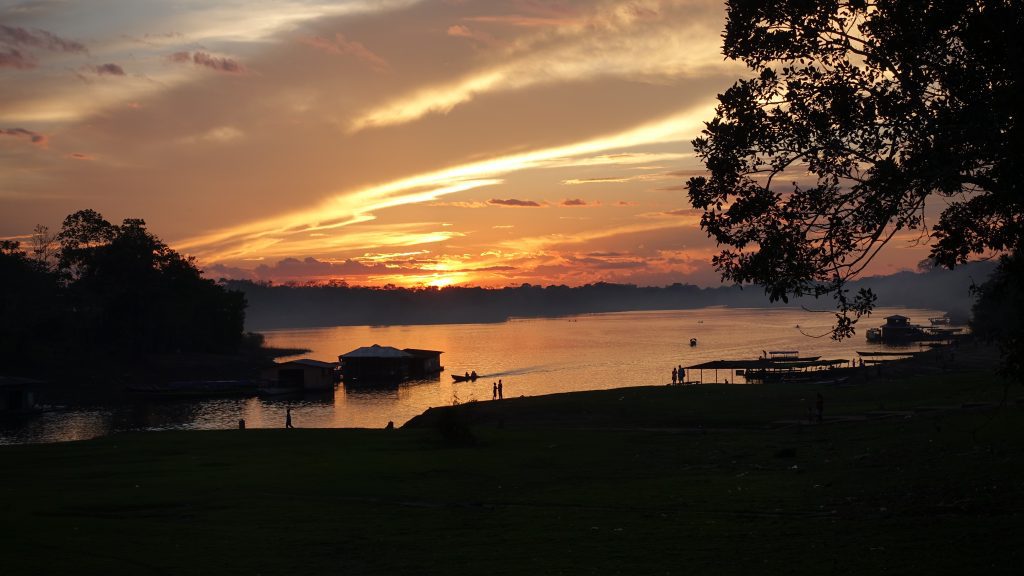
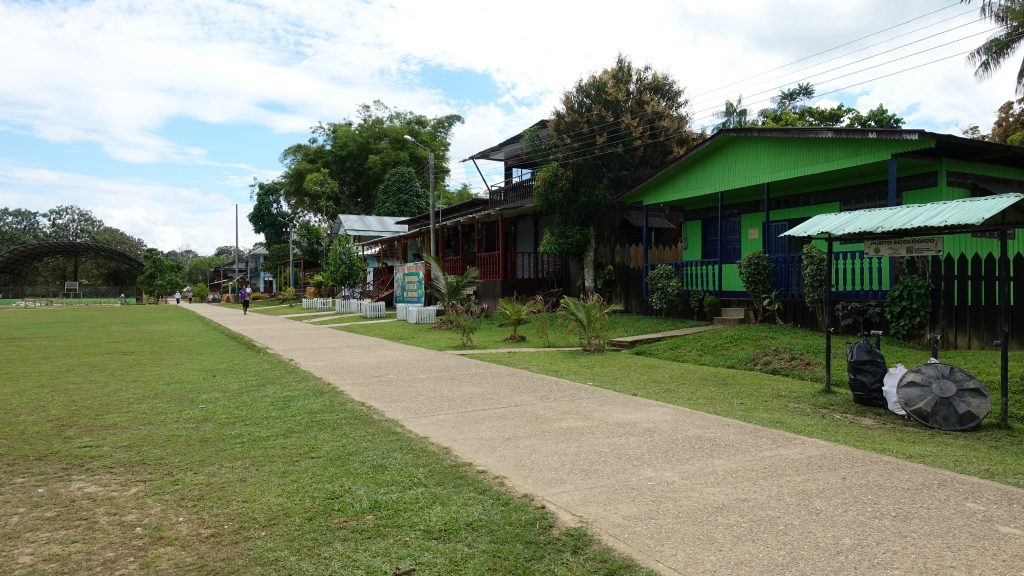
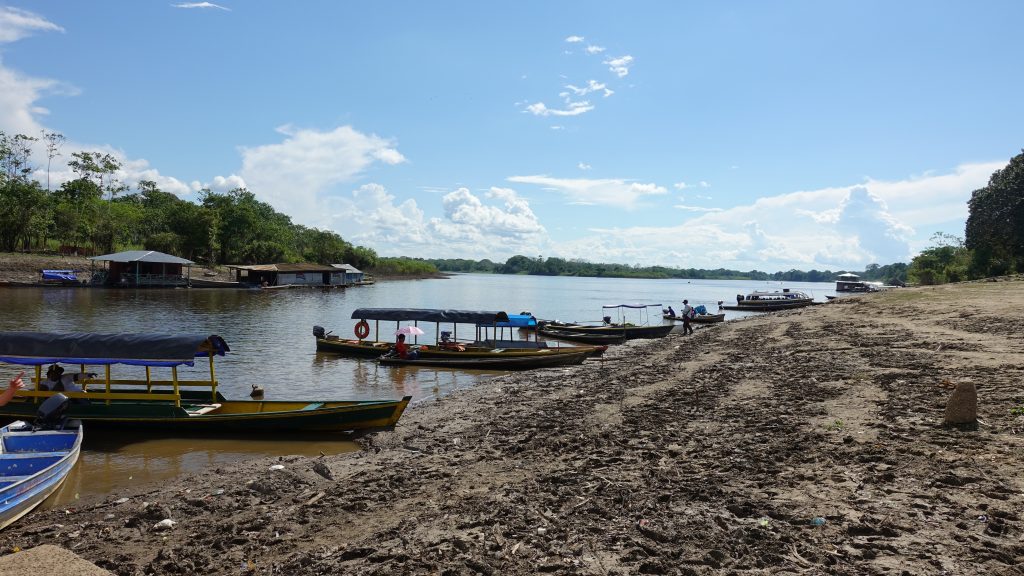
Lago Tarapoto
Puerto Nariño’s location is lovely, where a small tributary meets the Amazon and very close to Lago Tarapoto. Although referred to as a lake, Tarapoto is fed by the river and is technically part of the Amazon. We went for a refreshing swim and were nibbled on by sardines – not piranhas, they said, and having seen piranha teeth I’m inclined to believe them because I felt only little pinches. Comforting, isn’t it?
We were warned, however, and this might be true, to not pee in the water, unless we wanted to risk having a tiny candiru fish swim into our urethra. Yes, I’m serious! The scientific jury is out as to whether it’s just superstition or not, but we weren’t about to test it! Time to move on from creatures of the deep, perhaps? Yeah, let’s do that…
As you’ll see in the photo below, we also made an unsuccessful attempt at fishing, doing it the old-fashioned way with sticks as poles. In case you’re wondering about the funny-looking headgear – it was HOT and they are special “cooling” towels – an awesome purchase to make, by the way, if you’re traveling in the tropics! They may not be fashionable, but they are effective!
The lake (and the river itself) is also known for the famous pink Amazon dolphins. We did see several of them while we were there, but they really don’t jump out of the water and are therefore notoriously difficult to photograph. Suffice to say that I don’t have any images worth posting, sorry!
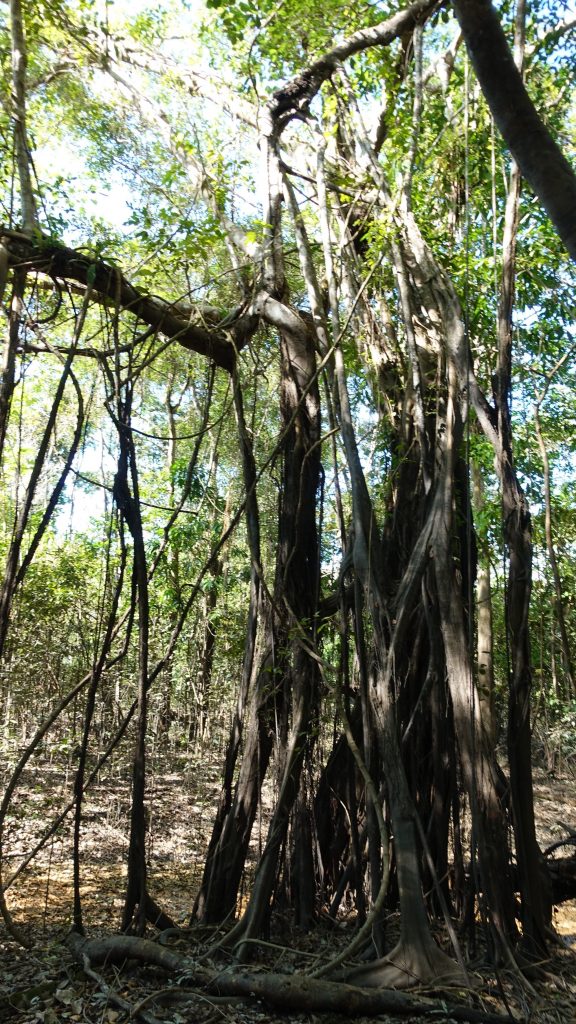
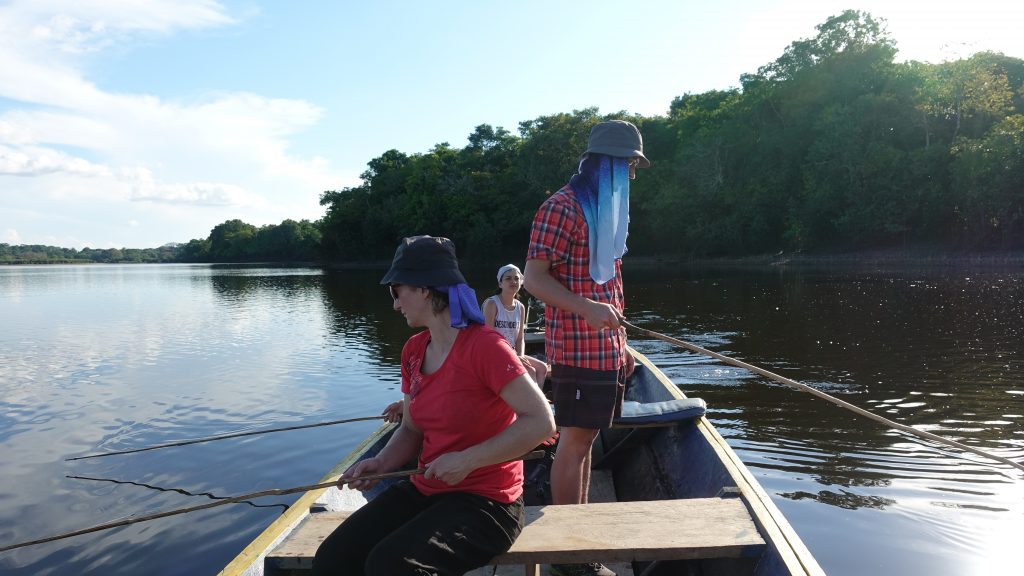
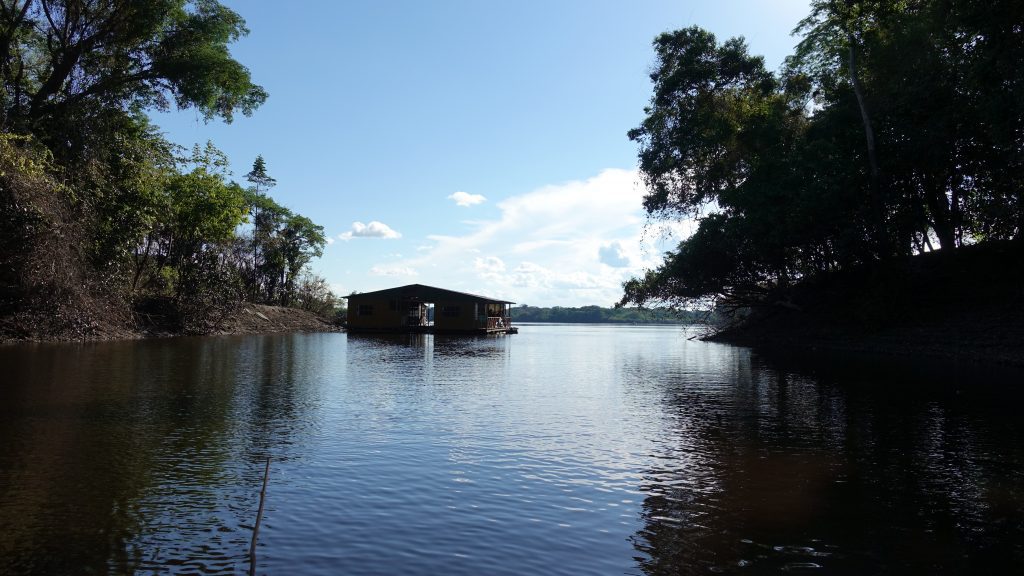
Jungle Trekking
We also took a guided sunset/nighttime jungle walk with Ismael, one of our hosts and a member of the local indigenous community. His knowledge of the jungle and its flora and fauna was impressive, and we got to see quite a few different critters including fish, reptiles, amphibians and the largest cockroach I’ve ever seen!
We had headlamps and a few flashlights along for after sunset, but apart from our artificial light the jungle was very, very dark! It was quite an experience.
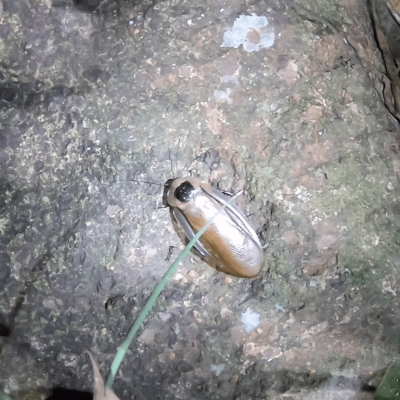
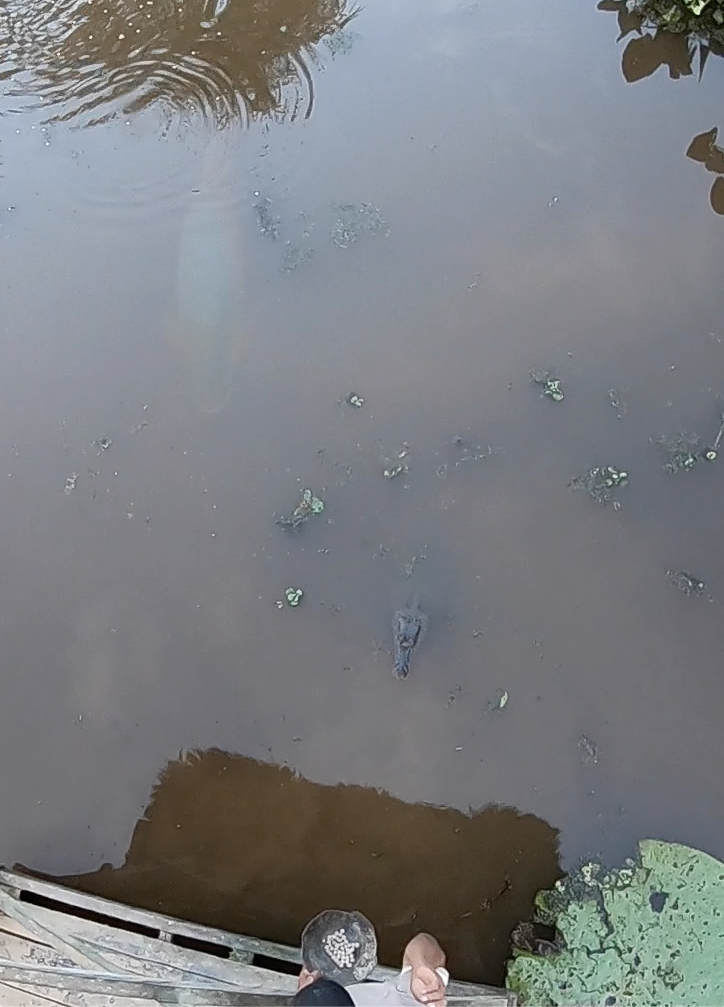
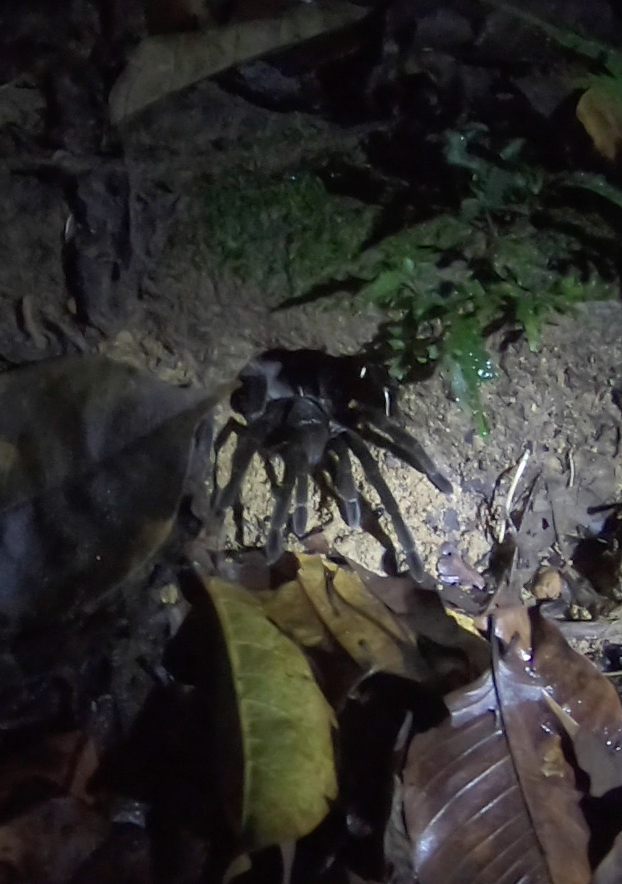
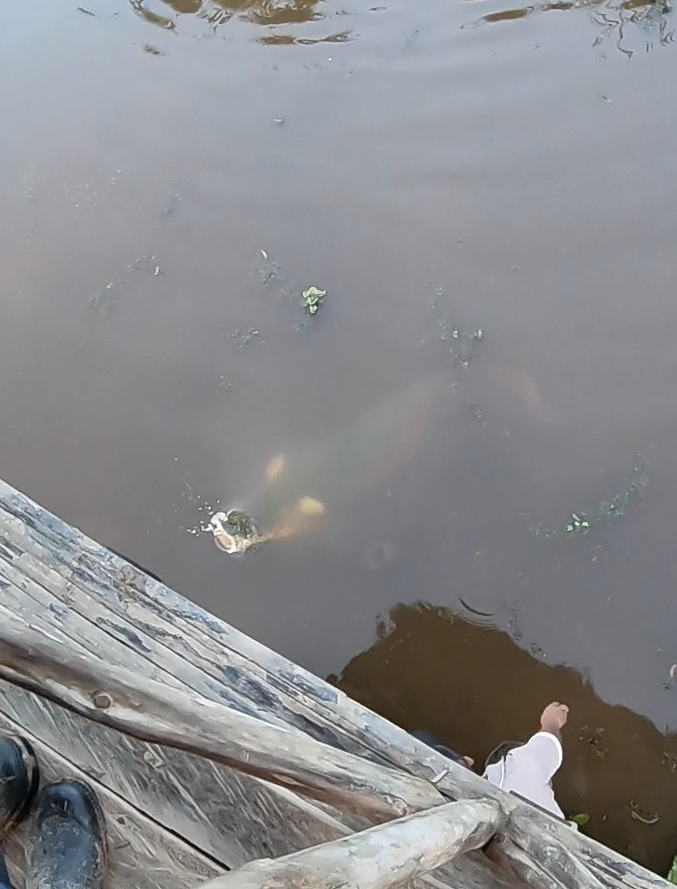
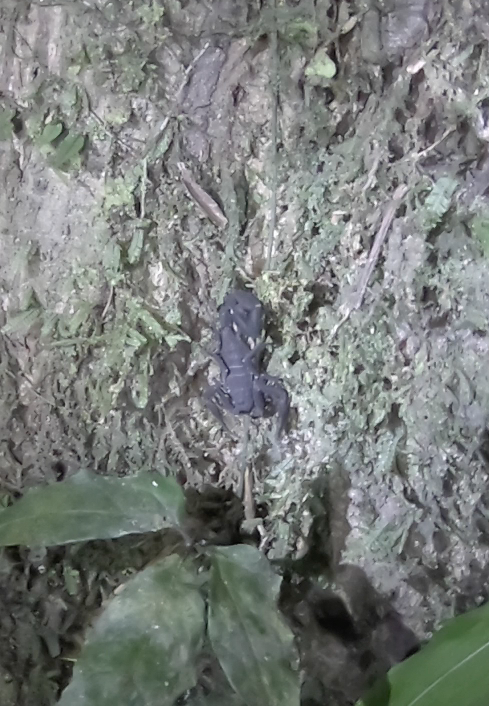
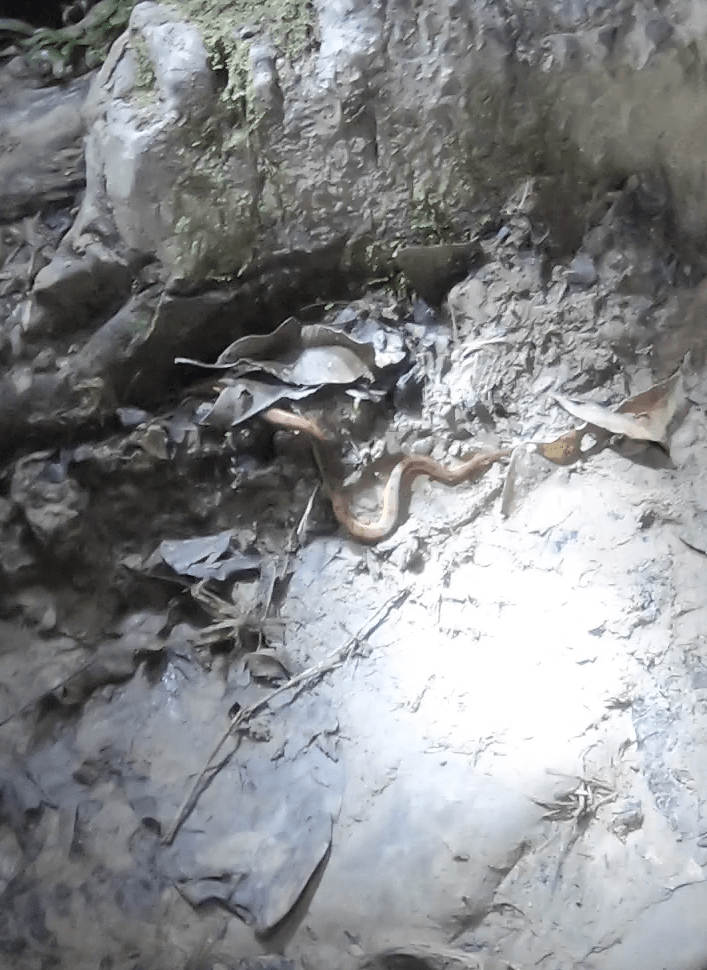
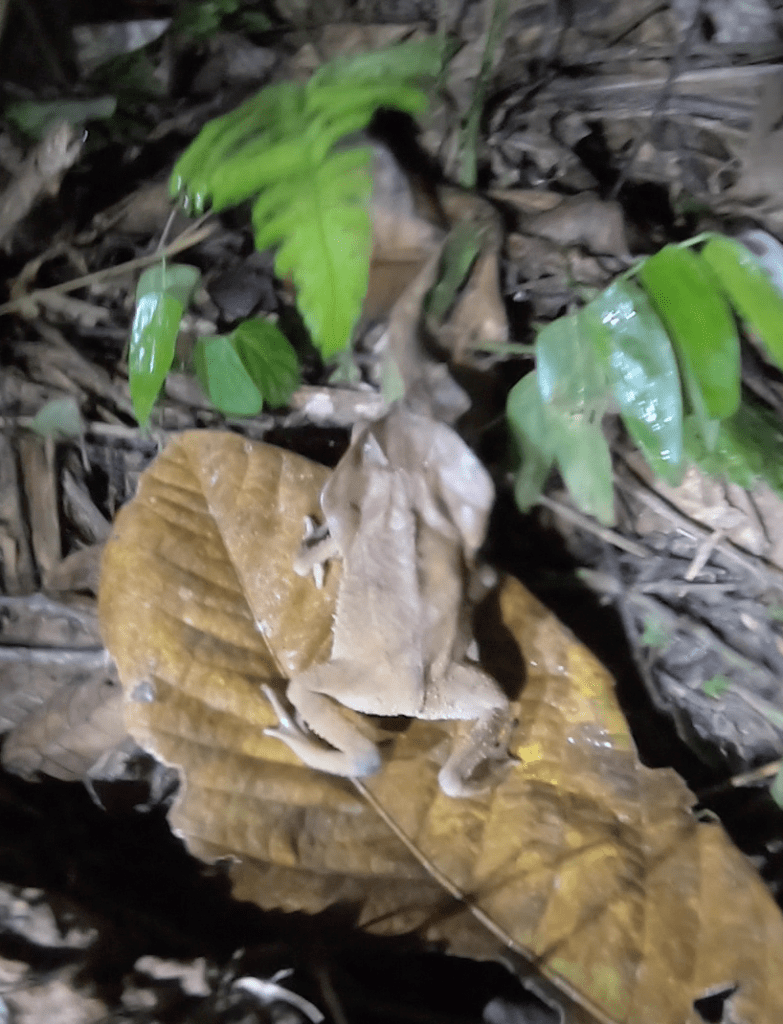
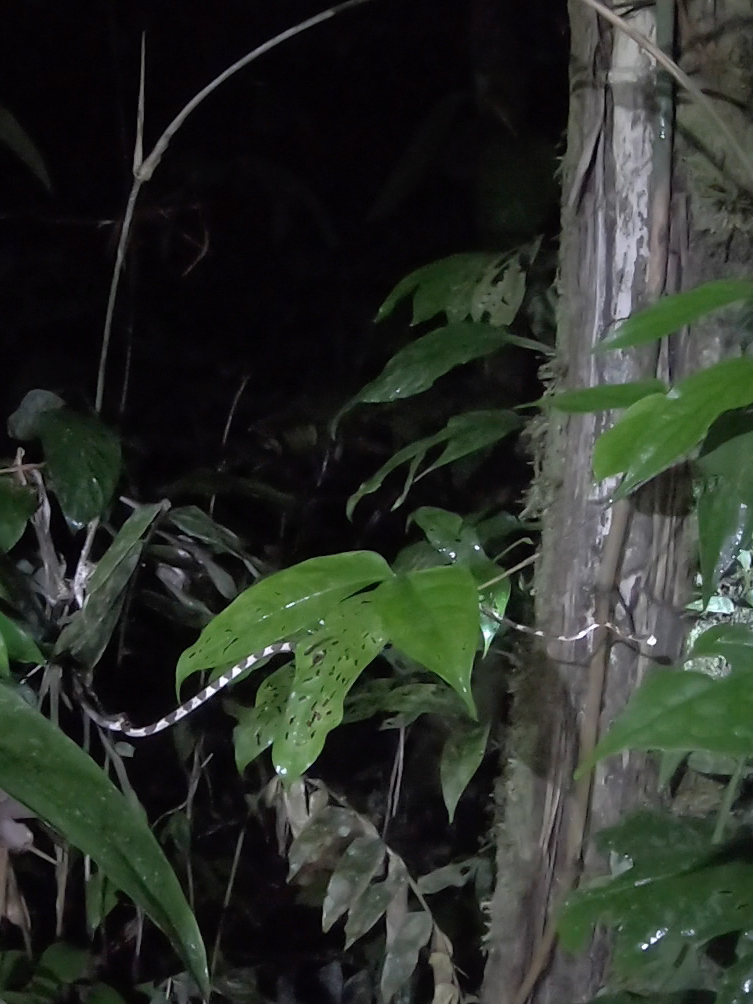
Dining and Lodging
Puerto Nariño is not a luxurious place, and visitors should not expect all of the typical western ‘creature comforts’. For example, when I visited the dining scene was rather limited, although I see that some new restaurants have sprung up since then. Maloka Piraña, for instance, looks terrific! The local food is good and the fresh juices are terrific, don’t get me wrong; it’s just that in such a small and isolated town it’s normal for the selection to be somewhat limited.
Our lodging at Maloka Napü – Ecodestinos was terrific, with comfortable rooms, a nice breakfast and fantastic hosts (Ismael and Marine, who as of 2024 are still there!) who organized all our activities into a perfect itinerary at a very reasonable cost. Maloka Napü did not offer hot water, though to be honest that was not an issue given how warm it is there, and that the ‘tap’ water really wasn’t cold, either. I usually prefer hot showers, but in this instance I was actually thankful for the chance to cool off! And remember when I mentioned Puerto Nariño being a budget-friendly destination? As of March 2024 a double room with private bathroom was only 150,000 COP (about 39 USD)…an absolute steal compared to ecolodges in other locations in the Amazon basin.
As far as creature comforts are concerned, when I visited there was no air conditioning anywhere, the very slow wi-fi was only available outside the town hall (leading to an interesting gathering of locals and visitors all standing around staring at their smartphones!), and in fact the town had only had round-the-clock electricity since the mid-2010’s. Some things might have changed in the meantime, but it’s important to keep in mind how isolated Puerto Nariño is, and simply go with the flow. I promise you, the experience of being in this unique place is more than worth the sacrifice of some minor luxuries for a few days.
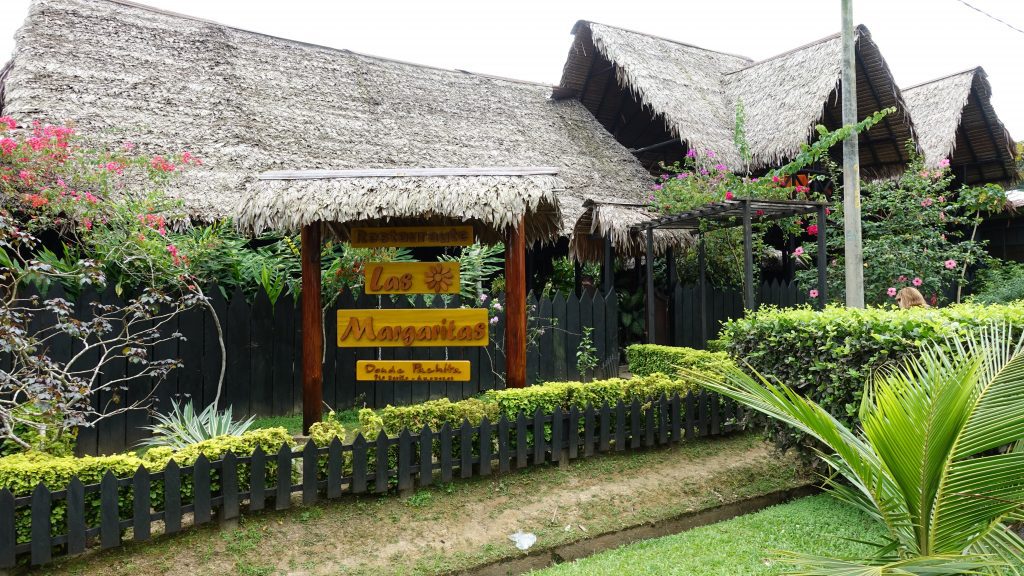
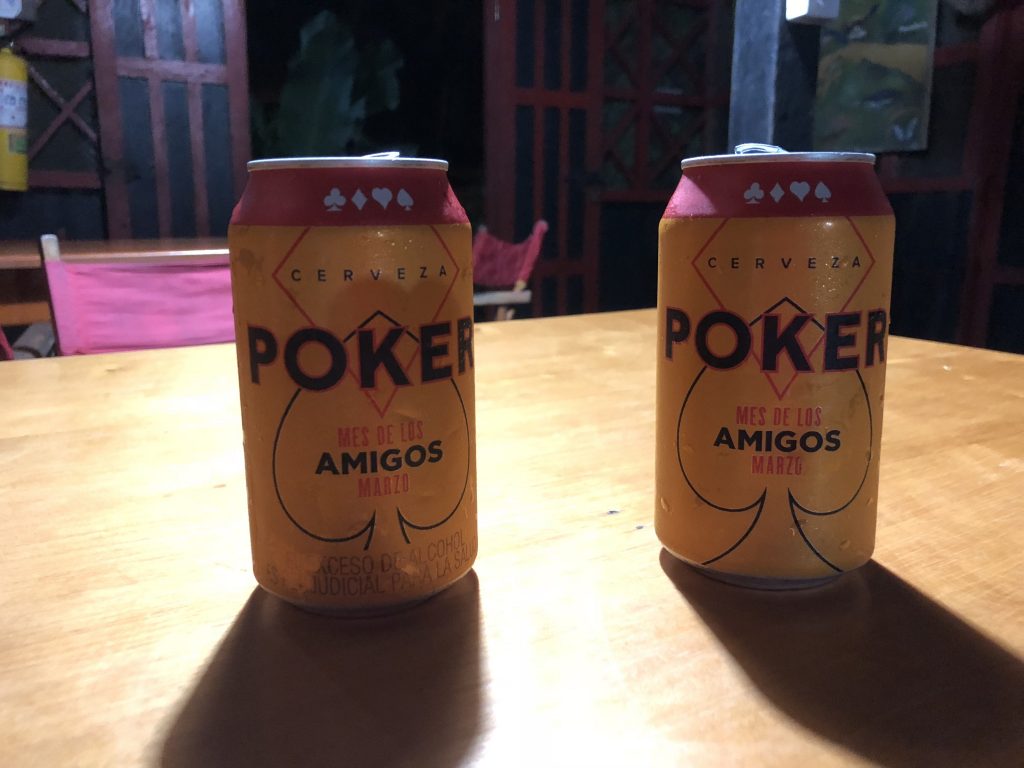
Loreto Mocagua and Fundación Maikuchiga
During our stay in Puerto Nariño we visited a nearby indigenous community called Loreto Mocagua, and a monkey rehabilitation facility just outside the community called the Fundación Maikuchiga.
Loreto Mocagua was a really neat experience, especially because we got to spend time with the former leader of the community who gave us quite a bit of insight into life there and how the community is structured. One of the most interesting things were the clans; there are various clans based upon different animals, and grouped according to ‘feathered’ (i.e, bird) or ‘non-feathered’. Families generally have their clan animal painted prominently and colorfully on their home, and individuals must marry outside their clan, which was meant to avoid close relatives marrying among the typically very small communities.
The visit also included lunch with several members of the community, providing revenue to the inhabitants and a chance for us to relax and take in the atmosphere of the village. There was also a small ethnographic museum built to share some of the stories of the community’s founding, culture, crafts and history. There wasn’t an ounce of performative spectacle to be found, just authentic insights into a close-knit community.
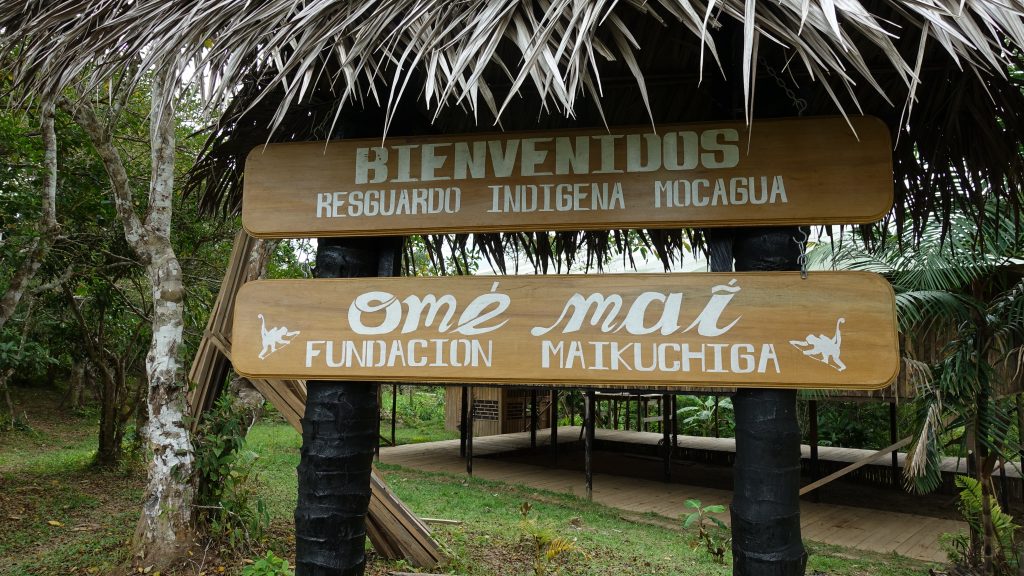
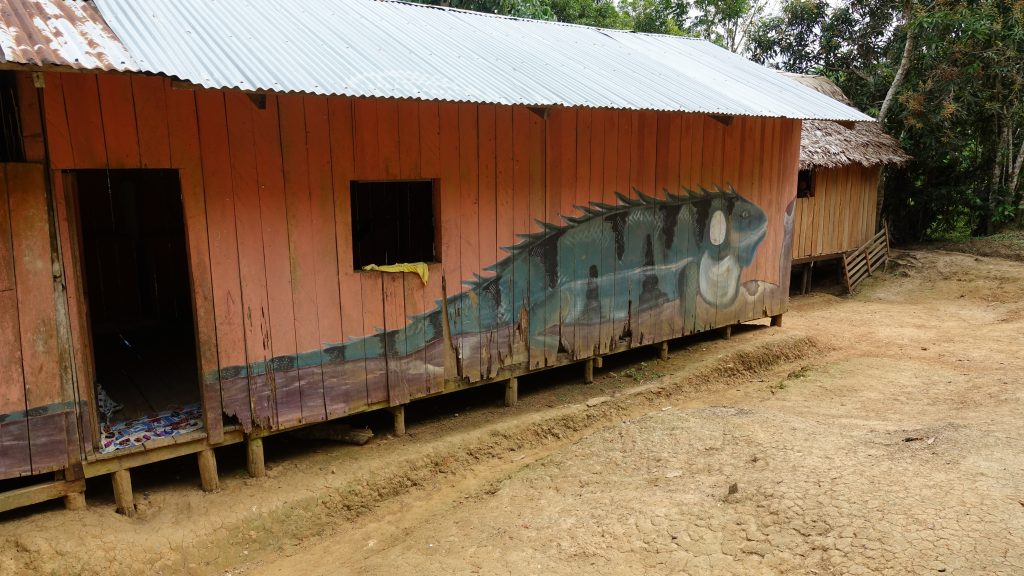
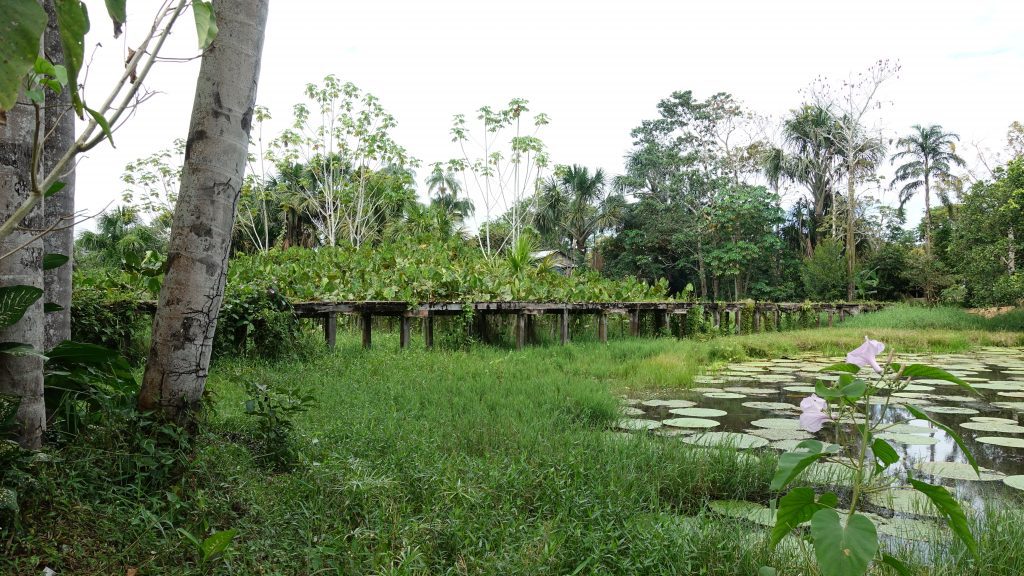
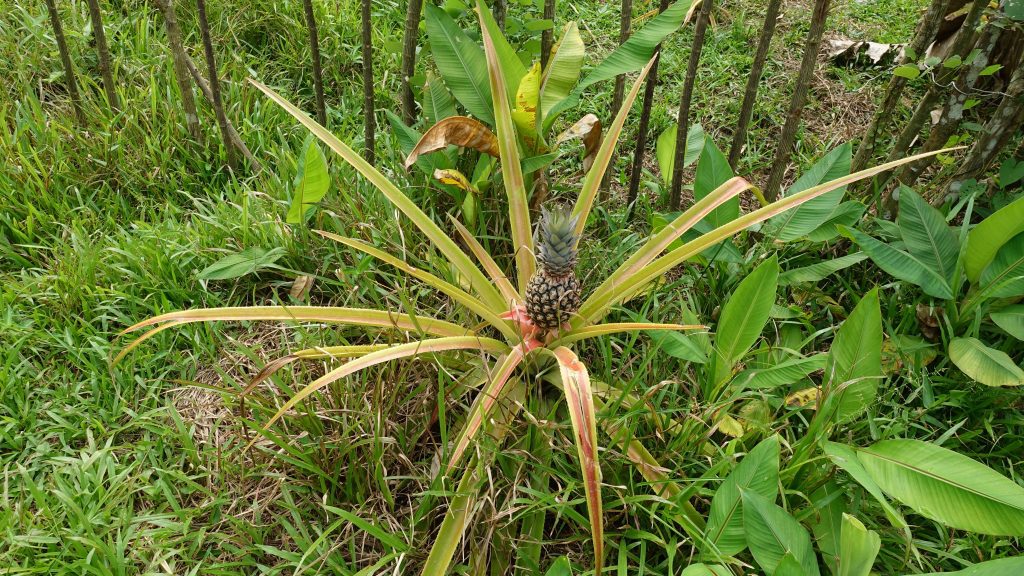
A short walk through the jungle from the village is the Fundación Maikuchiga, which rehabilitates numerous injured or rescued (from trafficking situations) monkeys. The monkeys seem to enjoy visitors, especially if they bring food…as we did thanks to our guide, who gave our younger son a cacao fruit as we were walking there. Let’s just say this kid was veery popular with the ‘locals’!
Some monkeys must be kept in isolation for various reasons; it’s important to respect these restrictions, as they are critical to the animals’ health and rehabilitation.
Fair warning: particularly clever monkeys (and there are always at least one or two!) are able to covertly open bags and steal things such as hats, sunglasses, etc., from unsuspecting visitors. Despite carefully guarding my belongings, turning my back to my barely open bag for maximum 2 seconds led to the theft of my insect repellant. You’ve been warned!
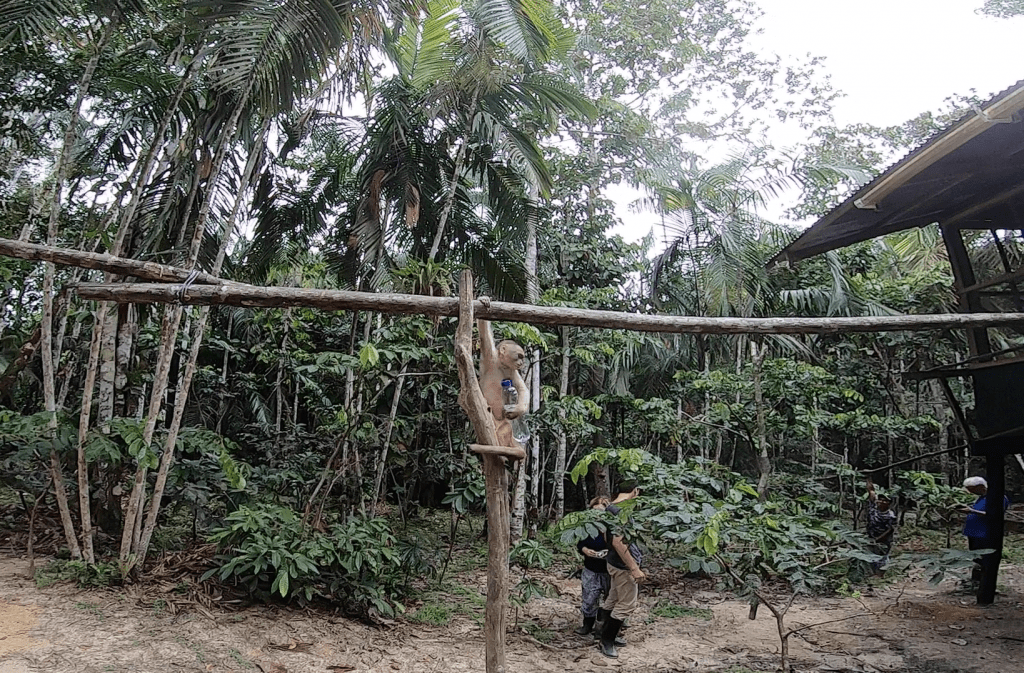
As I said at the beginning, our visit to the Colombian Amazonas was one of the top highlights of our 8 week trip to South America, and the village of Puerto Nariño and its surrounds were a big part of the reason why. In fact, while in Ecuador we did pay another visit to the Amazon basin, to the village of Misahuallí along the Río Napo (a tributary of the Amazon). We had a nice time, saw some interesting things and enjoyed a very fun whitewater rafting excursion, so I wouldn’t put anyone off from visiting that area…but in terms of really learning about and getting a feel for the Amazon region, the Colombian Amazonas was the superior experience.
So, if you want to get to know the “real” Amazon in an authentic and sustainable manner, you can’t go wrong with a visit to the Colombian Amazonas!
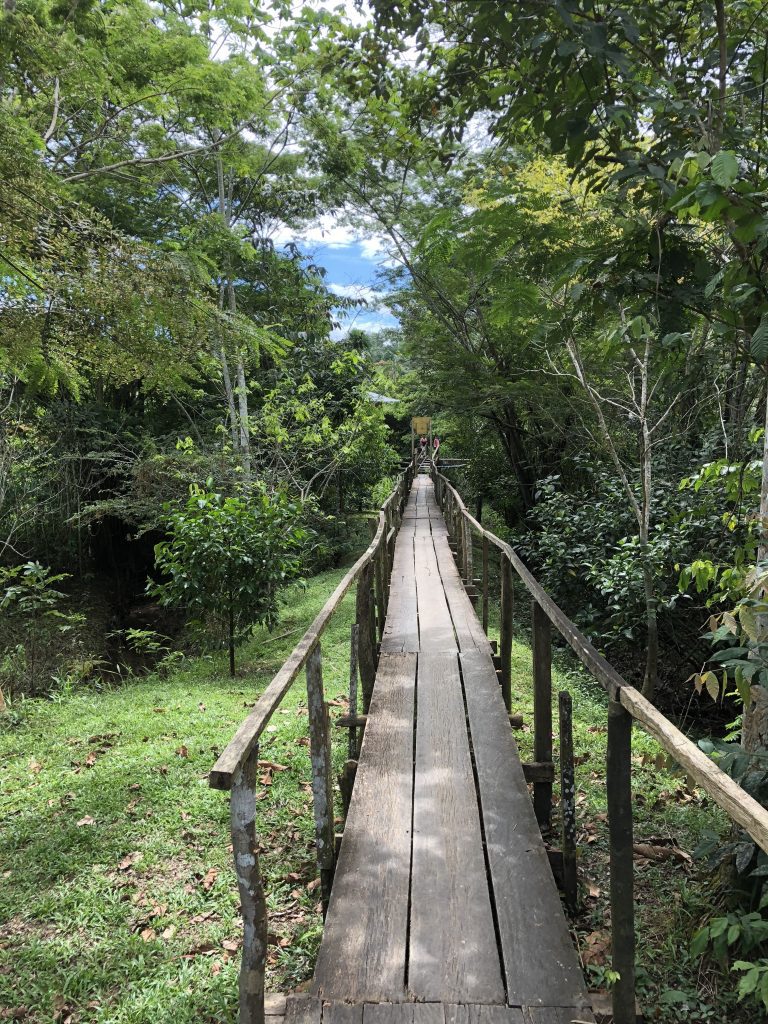
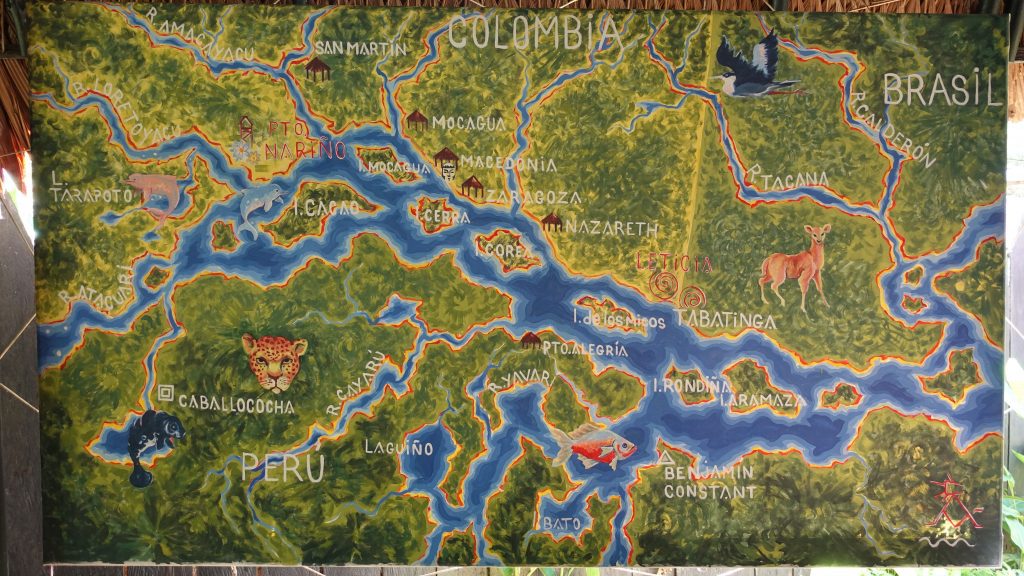
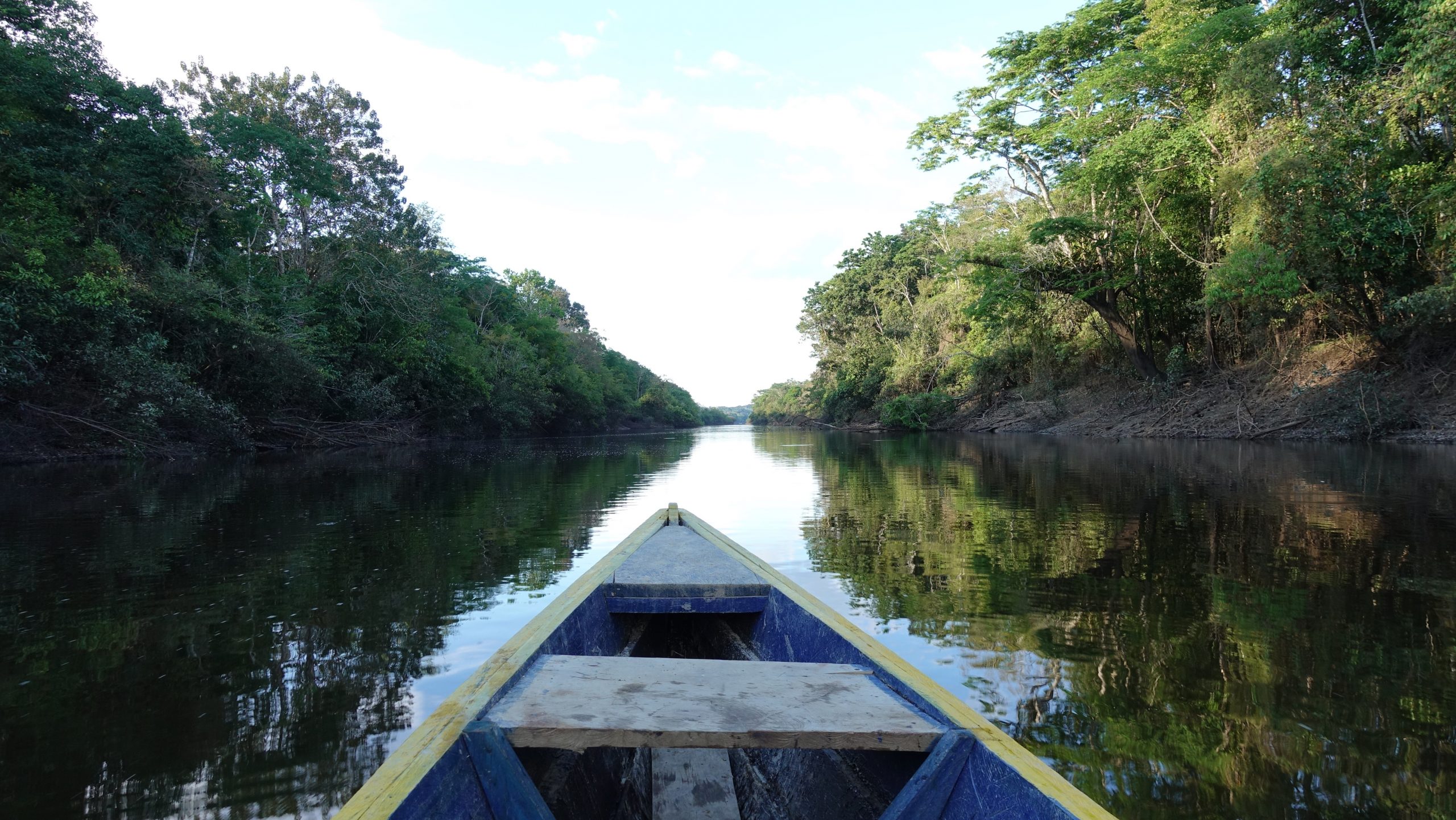

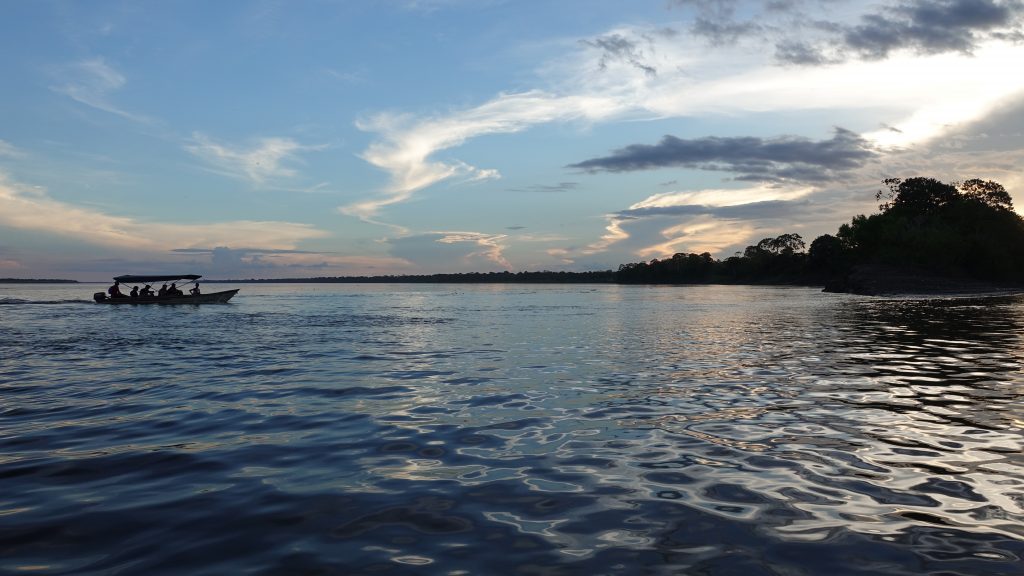
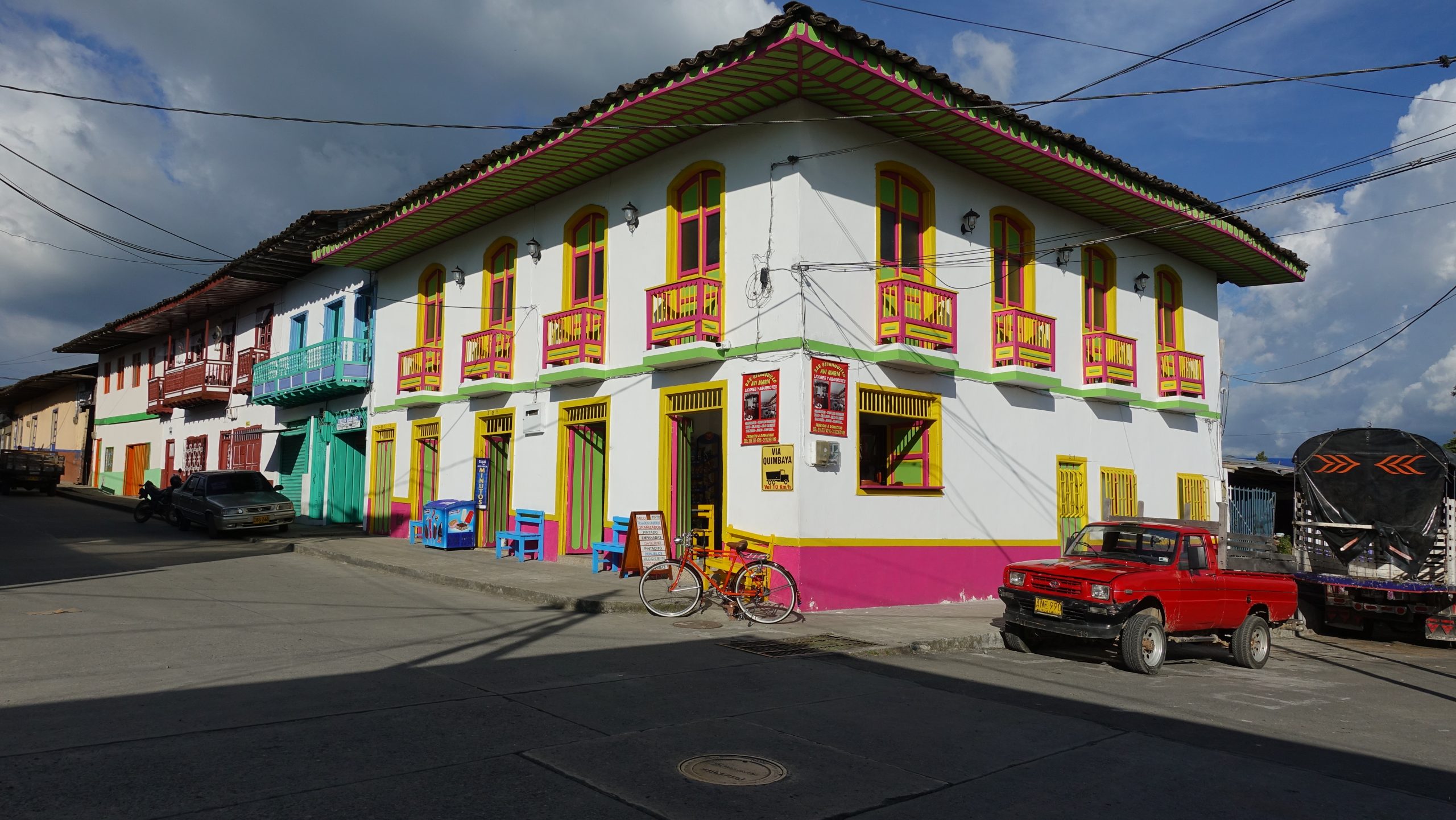
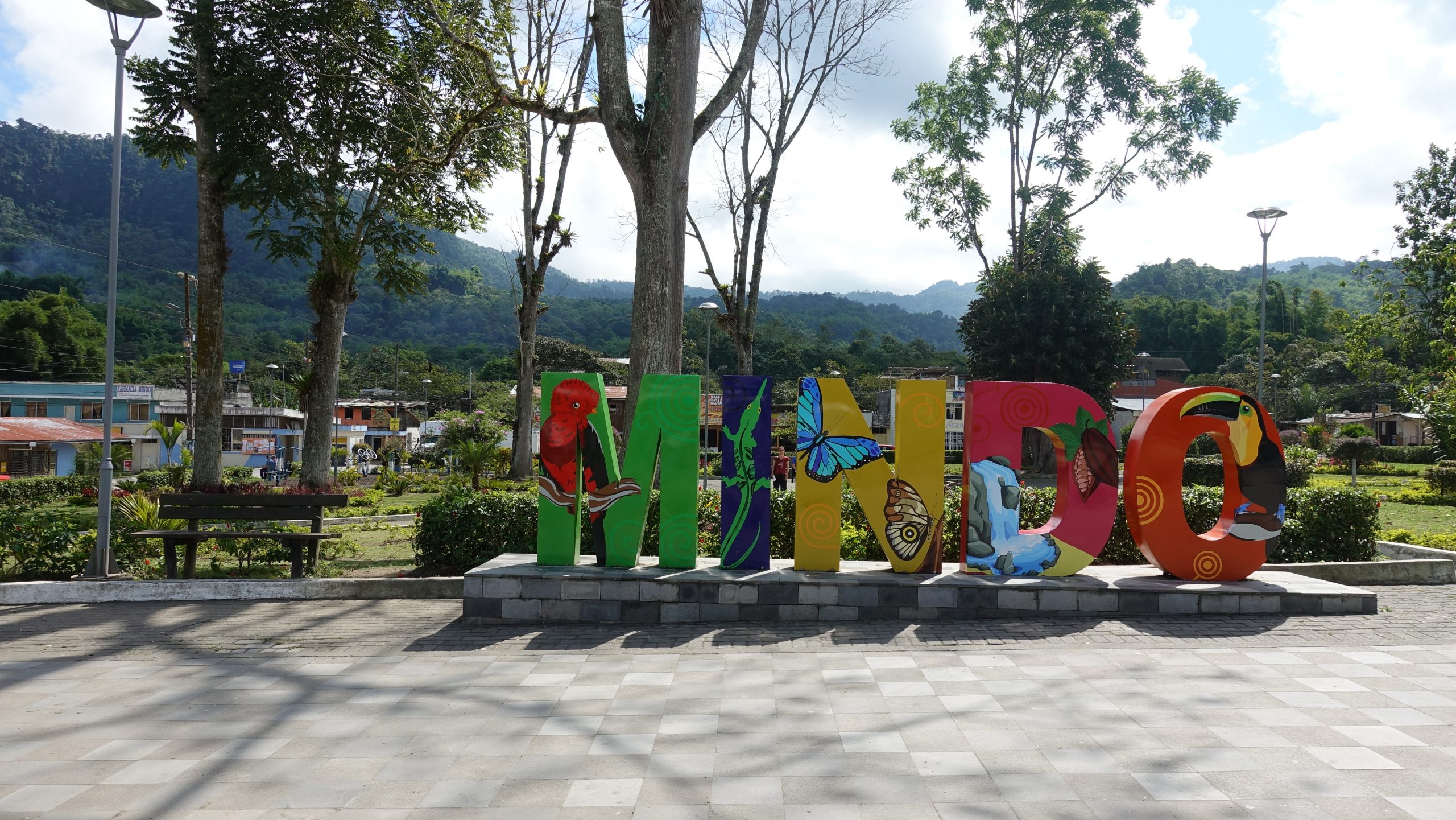

This Post Has 2 Comments
Pingback: Indigenous tourism: how to participate responsibly - Wanderlust for Life
Pingback: Off-the-Beaten-Path Adventures in Kratié and Stung Treng, Cambodia - Wanderlust for Life